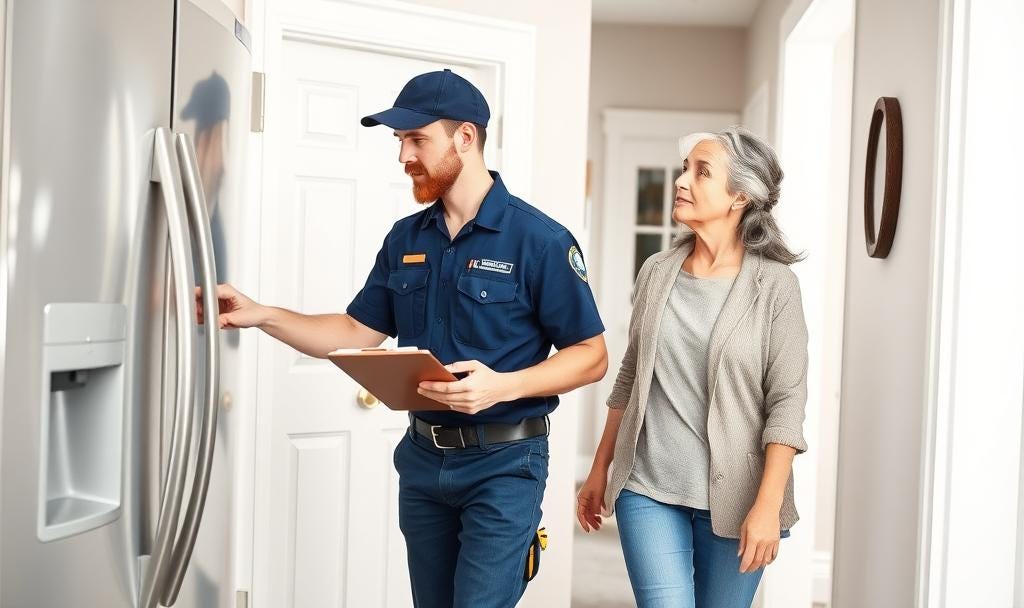Watch Out for “Heightened Awareness Syndrome” (HAS)
Avoid costly blame games! Learn 5 simple steps to protect your business from Heightened Awareness Syndrome and keep customer trust strong.
KickStart: Most clients don’t really scrutinize their home, until after your techs leave and then the fun begins… NOT!
One of my biggest headaches early on in my residential services business? Even with motivated techs, a strong team, and a great Business Infrastructure we still struggled with customer complaints.
So I learned to treat every job like a potential minefield. Why? Because even if our company did everything perfectly, in the eyes of our client we could still be “guilty as charged!” 😮
Of course, if we accidentally scratched, dinged, or broke something—we owned it. That’s just part of running an honest business and being a decent human being.
Heck, I even created a Customer Concern Follow-Up Sheet so my team could learn from our mistakes and then change our systems to make sure this particular issue never, ever happened again!
But what drove me up the wall was when my residential customers blamed us for problems that were already there in their home BEFORE we even started to work!
Did some clients try to stick me with their pre-existing damages? Maybe, but very few. Most of the time, they were just normal people falling into what I call…
“Heightened Awareness Syndrome” (HAS).
Here’s how HAS works: Many homeowners don’t really notice their stuff until something triggers them to look closer—like you or your crew working in their home.
Suddenly (cue up the threatening music here), 😱 that old scratch, stain, or crack the client has never paid attention to becomes glaringly obvious. Then their negative feelings get compounded when their spouse piles on!
And since your people were the last ones on site, guess who gets the blame? Yep—your team! Oh, the stories I could share…😢
So how do you protect your reputation (and sanity) from HAS? Here are five field-tested steps:
1. Pre-Interview- Subtly and sneakily ask upfront about any issues. A simple, “Would you show me any areas of concern? And let me note down on your work order anything you’d like us to be extra careful around…” works wonders.
👉ProTIP: When your client shows you their concern(s) quickly take “Immediate Action” to reassure them you’ll follow through. This can as simple as jotting their concern on the work order, taking a photo of the issue (only with their permission) or “testing” the area.
2. Pre-Analyze- During your initial walk-through, gently point out existing issues. Not in a confrontational way—just in a concerned tone of voice. For example: “Hmmm… looks like there’s a scratch here on your dresser. Have you ever tried using scratch cover on that?”
3. Pre-Qualify- Cover your butt (and your teams’ butt too!) Say something like, “Mrs. Jones, I noticed some rust on this vent cover. We don’t want to aggravate it, so we’ll be extra careful. In fact, if I may (brief pause) let me snap a photo to give our techs a heads-up! Now you’ve documented it, and you’ve shown you care without assigning blame.
Remember the HIDDEN BENEFIT here? You’re not just covering your butt. (Which is of course the most important thing!)🙄 You are also showing your client you are sincerely concerned about their home.
4. Pre-Inventory- Written documentation will save you. Take photos, jot down notes, and repeat back your customers’ own comments to them during the pre-job tour.
👉 ProTIP: During your pre-job walk-through try to let the homeowner take the lead to give them the very important Illusion of Control.
☠️WARNING: Be careful not to give the impression you’re taking the above steps to protect yourself legally. (Even though that is exactly what you are doing!)😁 Instead, you can mention you are doing this to help your techs be more efficient and work safely.
HINT: Avoid legal sounding phrases like “pre-existing damage” or “documentation”.
5. Post-Qualify- Before you or your tech leaves, always do a final walk-through. (If possible, with the client.) If something didn’t come out 100% perfect, you point it out first. Customers respect honesty, and it keeps control of the conversation in your hands.
One of my early mentors told me something over 40 years ago that has stuck with me for all these many years:
💡 “If you see it and point it out to the client before the job, it is THEIR problem. If they discover it after you’ve left the job, it will become YOUR problem.”
And you know what? My friend Marty was right. This simple saying really is the cure for Heightened Awareness Syndrome and a much happier, stress-free service business! 😎




